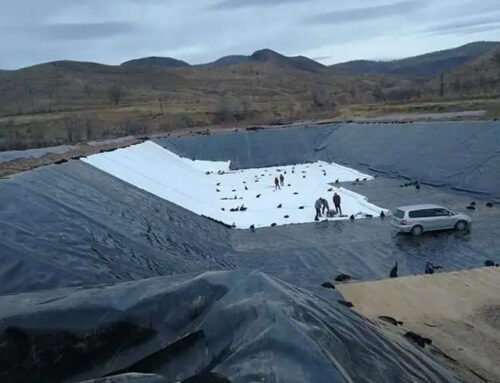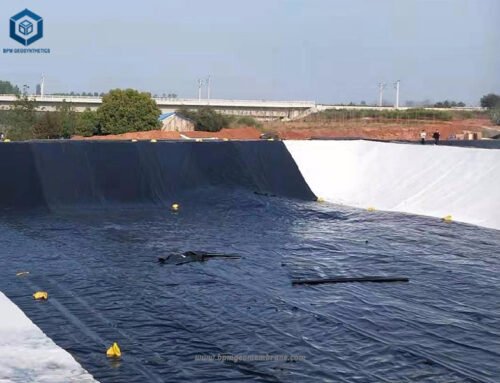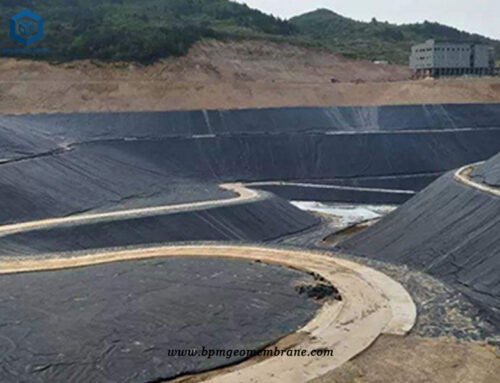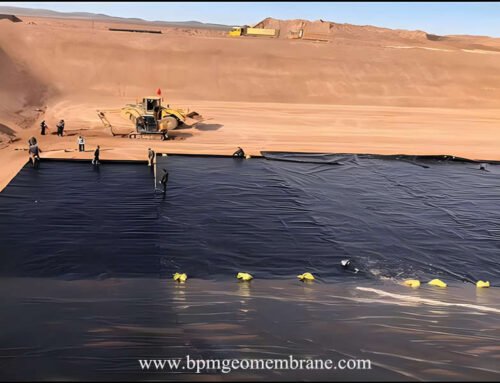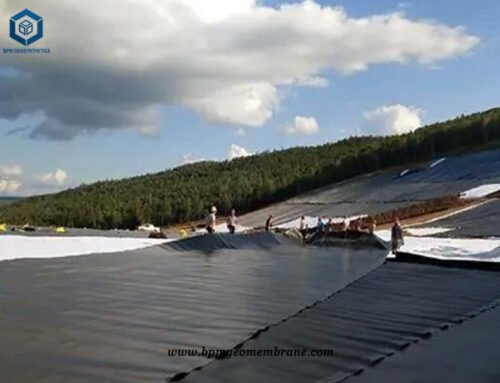HDPE geomembrane welding liner, also known as HDPE geomembrane liner, is the ideal anti seepage lining and cover material to improve the efficiency of biogas fermentation by relying on black geomembrane for heat absorption. During the biogas production process, leakage prevention is the most important factor that the designer should confider. In the installation process, HDPE geomembrane welding liner is laid on the dug soil in the pit, the slag extraction pipe and the biogas collection pipe are installed in the pond according to the anaerobic fermentation process. The bottom of the slag discharge pipe should be close to the bottom geomembrane welding liner. The gas pipeline of the biogas digester uses ø200mm PE pipe, which can withstand the pressure above 10kpa. Before installing the gas pipeline, check whether the gas pipeline is leaking, especially the buried gas pipeline. Anchor ditch is excavated 1.5m around the earth pit pond, the size of the anchor ditch is 1m*1m, and the limited internal and external corners are rounded and chamfered. After laying the HDPE base geomembrane welding liner, the plain soil is filled with a thickness of 20cm. After the top geomembrane liner is laid, the anchor trench is filled with plain soil and ram. HDPE impermeable geomembrane liner is covered to seal it, and then anchor the ditch to fix the HDPE geomembrane liner to form an integral anaerobic fermentation space.


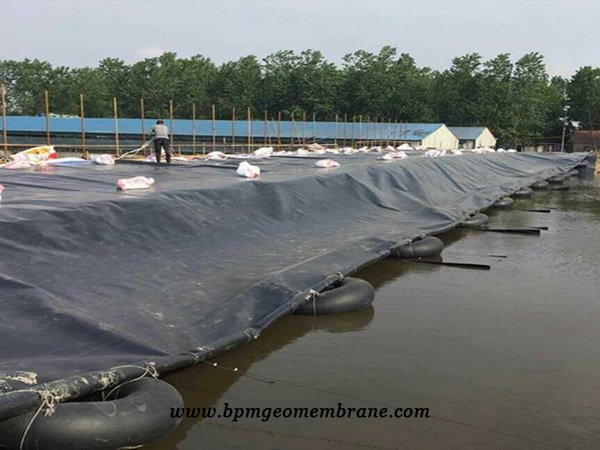
HDPE geomembrane liner is made of high-quality polyethylene virgin material, the main component is high-density polyethylene, carbon black, anti-aging agent, antioxidant, ultraviolet absorber, stabilizer and other auxiliary materials, using the advanced fully automatic production equipment, and three-layer co-extrusion technology. All BPM HDPE geomemrbane products are produced in accordance with American GRI standards and ASTM test standards. As for biogas digester geomembrane, we generally recommend 1.0 mm thickness geomembrane welding liner as the bottom lining system, and the standard is not lower than the national standard. If the biogas digester geomembrane cover, you should choose the urban construction standard geomembrane to ensure safety and service life. Its thickness should not be less than 1.5mm. The black anti-seepage geomembrane liner for the biogas digester at the bottom adoptsing anti-seepage geomembrane materials using non-toxic environmental protection materials. The principle of self-defense is a physical process. The whole process does not produce toxic substances and does not affect land re-usage. Moreover, the relatively low cost effectively geomembrane welding liner replaces conventional materials (such as concrete, steel plates, bricks, etc.) to solve environmental problems such as shortage of construction materials, high prices, and dust, so as to comply with current environmental protection requirements. Black HDPE geomembrane welding liner can also solve the problems of water leakage and gas leakage caused by shrinkage, expansion and cracking of other types of damages due to temperature changes; it can also solve steel plate corrosion, pipeline blockage, equipment damage, and operation of high cost steel plate.
Installation of HDPE Geomembrane Welding Liner for Biogas Pool Project in Thailand
- Before geomembrane cutting, the relevant dimensions should be accurately measured according to the actual size. Generally, it is not advisable to cut according to the size shown in the figure. It should be numbered piece by piece and recorded in detail on the special form.
- When geomembrane welding and laying, we should try to minimize the number of welds, and save raw materials as much as possible on the premise of ensuring quality. At the same time, it is easy to guarantee the quality.
- The overlap width of the seam between the geomembrane liner is generally not less than 10cm, and the welding seam is usually arranged in parallel to the maximum slope, that is, along the slope direction.
- Usually in corners and deformed areas, the length of the joints should be as short as possible. Except for special requirements, on slopes with a slope greater than 1:6, within 1.5 meters from the top slope or stress concentration area, there should be no welds as far as possible.
- When geomembrane welding and laying, try to avoid artificial wrinkles. When the temperature is low, it should be stretched and flattened as much as possible.
- After the geomembrane is laid, it is necessary to minimize walking and moving tools on the surface of the membrane. Anything that can cause harm to the impermeable membrane should not be placed on the membrane or carried on the membrane to avoid damage to the membrane.
About BPM
As the the professional geomembrane manufacturer and supplier, BPM has been dedicated to supplying one stop geomembranes and services to worldwide customers since its foundation in 2010. Our main innovative, high quality geosynthetics products include geomembranes, geotextiles, geocells, geosynthetic clay liners (GCLs), drainage boards, geogrids, etc. All BPM brand HDPE geomembranes have passed the certificates of the ISO9001, ISO14001, TUV, Soncap, SASO, BV certificates and the test of SGS and Intertek etc. Our geomembrane products have been exported to over 36 countries. If you have any questions or inquiries, please fill in and submit the form to contact us.

